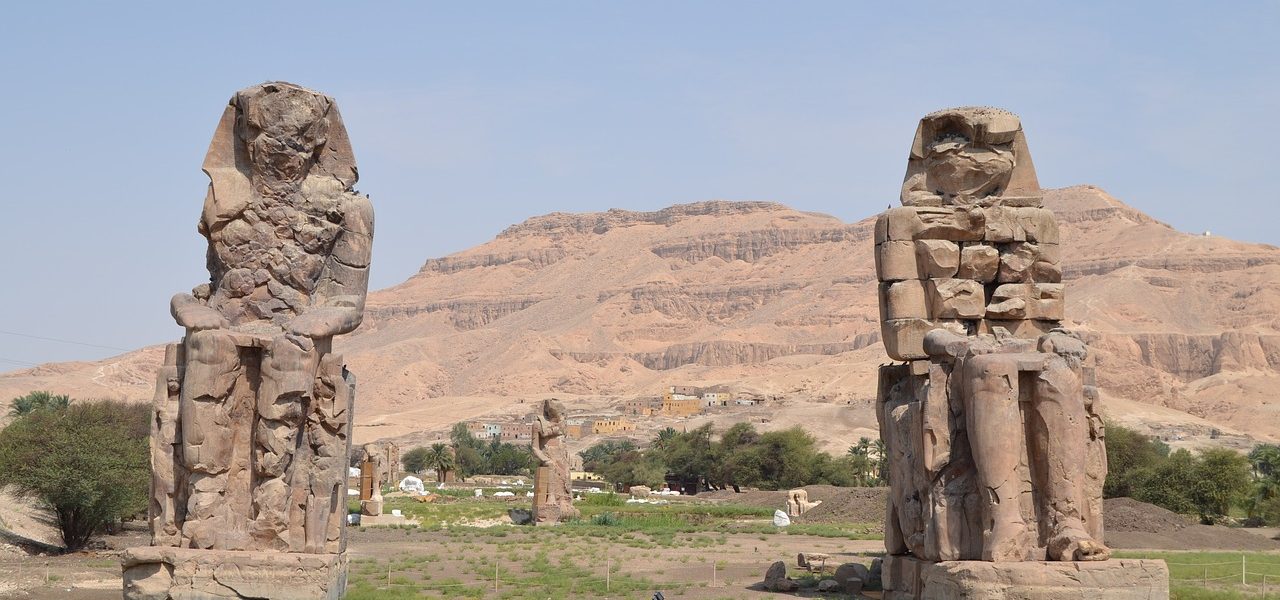Colossi of Memnon
The statue of “Colossi of Memnon ” is located on the western bank of Luxor city in upper Egypt.
The Statue of Memnon, the guardian of the West Bank of Luxor, is one of the most important tourist attractions in Luxor.
The two statues were in front of the entrance to an ancient funerary temple in memory of King Amenhotep III of the Eighteenth Dynasty, who ruled between 1417 and 1379 BC.
Only two gigantic statues remain, with a height of up to 20 meters.
Location
The Colossi of Memnon are located on the floodplain of the Nile, west of Luxor, on the road that leads to the Valley of the Kings and the Valley of the Queens.
Design of the Colossi Of Memnon Statues
The two statues embody King Amenhotep III, who is sitting on the throne with a low cushion, placing his hands on his feet and above him the royal crown, and to the right of his legs there is a small statue of his wife Queen Tiye and to his left a small statue of his mother, “The Death of Umm Weah”, and on both sides of the throne, there is an inscription representing the Nile god. , connects the papyrus plant and the lotus (the delta and Upper Egypt) symbol of each of them, and this is a sign of the unification of the country.
The two giant statues became famous as the Colossi of Memnon, as a result of an earthquake in 27 BC, which led to the fall of the upper part of the northern statue and the cracking of some parts.
Mysterious Sounds of Colossi of Memnon
The statues were famous in antiquity for producing a sound at dawn, which the Greeks interpreted as the mourning cries of Memnon for his mother, Eos (the goddess of dawn). The sounds were likely caused by the rising temperature of the stones in the morning sun, causing them to expand and contract.
Why was called the Statue “Memnon” by that name?
The legend behind the name “Memnon”
The story of naming the two statues “Memnon” goes back to a funny story, which is that when the two statues were cracked in ancient times in the era of the Greeks, especially the left statue, sounds were issued from them as if they were sad singing due to the passage of air through those cracks. “, who was killed by Achilles in the Trojan Wars, hence the name Memnon, and because of those sounds, the two statues were among the most famous ancient monuments, and with the increasing importance of the legend that was being narrated about these two statues, one of the Roman emperors decided to repair the cracks and what was cracked The two statues, around the year 200 AD, stopped the sound forever, a phenomenon that remained for a long time, a reason for the influx of visitors and travelers to Egypt, and the fact remains, which is that these two statues belong to King Amenhotep III, one of the kings of the 18th dynasty, the most powerful ruling family in ancient Egyptian history.
We organize a Luxor tour to West Bank to visit The Valley of Kings & Queens, Colossi of Memnon, and Hatshepsut Temple for a full day.




